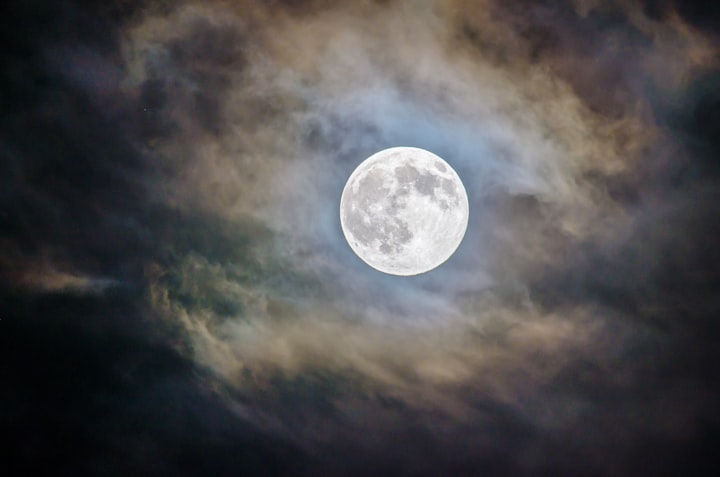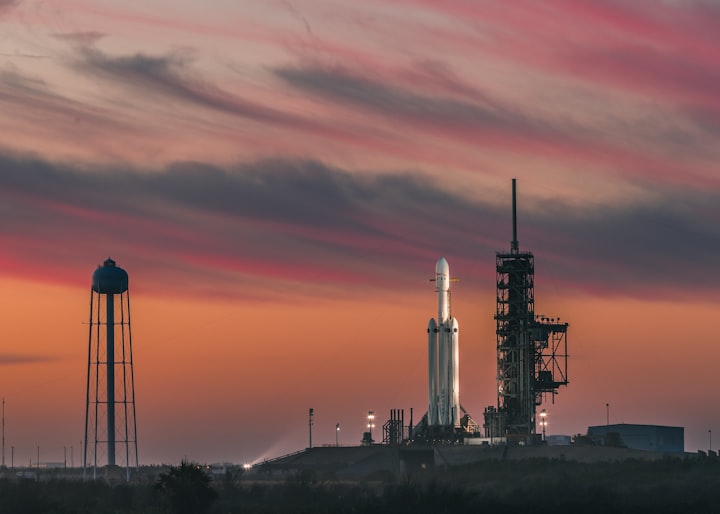Our Space Journey Continues. It Appears Some Vital Lessons May Have Been Learned Too
Artemis 1 finally achieved launch conditions to return to the moon but not with a human crew this time. Why not have a read and discover why?

“… we have worked hard as a team. You guys have worked hard as a team to this moment. This is your moment.”
Artemis I. Launch director Charlie Blackwell-Thompson (NASA.)
These were Blackwell-Thompson's words spoken marking the successful launch of ‘Artemis 1' after many failed attempts previous to its eventual blasting-off from its launch platform at NASA’s modernized Kennedy Space Center in Florida on Launch Complex 39B, on 16th November 2022.
But for this first launch, there is no human crew onboard this flight.

Nope. You heard me right.
Artemis 1 does not carry a human crew.
To help comprehend this, ‘TIMESNOW,’ (published on 15th November 2022) explained that “as NASA’s original Apollo missions were not designed for science but for the optics only during America’s space race with Russia, no other manned mission was ever sent back to the moon since then.”
…the Orion spacecraft won’t be empty. Snoopy, Girl Scout badges, LEGO mini figures, and tree seeds are just some of the thousands of mementos that will be aboard when the mission launches.
There will also be a lot of technology that will gather data during the 42-day, a 1.3-million-mile mission that will take the uncrewed spacecraft as far as 280,000 miles away from Earth, circling the moon before heading home.
It’s been nearly 50 years since people have set foot on the moon, so the test flight will also be a trial of the new rocket and spacecraft before a crewed flight.
“We’re mindful that this is a purposeful stress test of the Orion spacecraft and the Space Launch System Rocket,” Mike Sarafin, the mission manager for Artemis I stated.
Sarafin goes on to explain that “we will learn a great deal from the Artemis I test flight. And through this experience, we will change and modify anything necessary to prepare ourselves for a crewed flight on the very next mission.”
NPR (National Public Radio.) Published 22nd August 2022.
The National Aeronautics and Space Administration complex (NASA) has without a doubt, realized that the safety of human life is paramount in all space missions now, after the appalling launch pad disaster of Apollo 1 on 27th January 1967.
Although writing about Artemis 1 primarily, I feel it is necessary to remind everyone of the enormous dangers that are involved in space travel and of those lives that have perished as a result over the years. Below is the terrible account of an earlier manned mission that had been set to reach the Moon, AS-204.
AS-204, Apollo 1
Rookie astronaut Roger Chaffee and veterans Virgil “Gus” Grissom and Ed White had issues with Apollo 1 from the get-go, voicing their concerns about the quantity of flammable nylon and Velcro in the command module with Joseph Shea, manager of the Apollo Spacecraft Program Office (presenting him with a gag version of their crew portrait in which their heads were bowed and hands were clasped in prayer.)
“It isn’t that we don’t trust you, Joe, but this time we’ve decided to go over your head,” read the inscription.
“Success had become almost routine for us,” NASA flight director Gene Kranz wrote in his book “Failure Is Not an Option.”
(Hardcover version of this book can be purchased from Amazon for £11.41 (or $13.75.)
The country had gotten complacent.
Perhaps NASA had gotten complacent as well. In spite of orders from Shea, the flammable materials were never removed from the Apollo 1 command module.
Throughout the afternoon, minor glitches and communication issues between the spacecraft and Mission Control in Houston caused repeated delays. Hours behind schedule, early evening darkness settled around the launch pad as the simulated countdown reached a hold with 10 minutes left as attempts continued to resolve the radio issues.
“How are we gonna get to the moon if we can’t talk between two or three buildings?” quipped a frustrated Grissom at 6:30 p.m.
Less than a minute later, the engineers watching the capsule cabin on a closed-circuit television screen were startled by a flash.
A spark that likely came from faulty electrical wiring behind a panel door below Grissom’s feet suddenly ignited in the capsule. Fed by the cabin’s pure oxygen, the spark took only seconds to morph into an inferno that tore through the flammable nylon netting and Velcro surrounding the astronauts.
“Hey! We’ve got a fire in the cockpit!” yelled one of the astronauts.
Horrified engineers watched on their screens as smoke filled the cabin while White desperately attempted to release the cumbersome hatch.
“We have a bad fire! We’re burning up!” came another screaming transmission from the cockpit.
Then silence.
Pad safety workers grabbed extinguishers and rushed to the capsule, but the dense smoke reduced visibility to nearly zero. Even rescuers wearing smoke masks were overcome by toxic fumes, and the tremendous heat burned through their gloves.
It took more than five minutes for the pad crew to open the complicated latch system on the hatch. By that point, it was far too late. The astronauts had virtually no time to unstrap themselves from their seats, let alone escape the flash fire. Burning at hotter than 1,000 degrees Fahrenheit, the blaze melted the astronauts’ space suits and oxygen tubes. The crew likely lost consciousness and died from asphyxiation from inhaling toxic gases. The process of removing the men from the charred capsule couldn’t begin until six hours after the fire, and it took 90 minutes to extricate their bodies, which were fused to the nylon of the cabin interior.
History.com. Remembering NASA’s Apollo 1 fatal tragedy that occurred on 27th January 1967.
Many years later as technology had progressed far enough to herald in the Space Shuttle program for NASA, let us also not forget the tragedy that extinguished another seven lives of astronauts in 1987.
STS-51-L
So, thank you to all for bearing with me here, and I would hope you spend a minute of your time to remember these fatal events which claimed the loss of lives in these catastrophic events.
Maybe share this article too amongst your social media channels too, as a mark of respect for these men and women who perished whilst endeavoring to achieve their goals.
Better late than never, NASA must have surely learned from such disastrous mistakes, which has thankfully led to the primary lift-off of Artemis 1 being unmanned at this stage.
The goals of Artemis 1 appear to be well planned out, demonstrating clearly that the many vital elements that led to the cataclysmic disasters of AS-204 (Apollo 1) and STS-51-L (Challenger) which brought to an abrupt end to what could plainly be seen as a bad example of over-confidence, over-eagerness, and a dangerous complacent attitude. Artemis 1 is scheduled to travel to the Moon, deploy some small satellites and then settle into orbit. NASA aims to practice operating the spacecraft, test the conditions crews will experience on and around the Moon, and assure everyone that the spacecraft and any occupants can safely return to Earth.

According to Space.com, if all goes well with Artemis 1, NASA will start gearing up for Artemis 2, which will send astronauts around the moon in 2024. Then in 2025, the agency plans to launch Artemis 3, which will put humans down near the lunar south pole, the site of the envisioned research base. Artemis 3 will be the first crewed lunar landing since the final Apollo mission in 1972.
I believe that this provides many of us with a much-needed boost for our collective confidences that the much talked about ‘manned mission to Mars,’ has been far better planned out than the world was first led to believe.
We won’t be jetting off to Mars just yet then.
The entire future space plans have been injected with much thought-out and less ‘gung-ho’ attitude that befell Apollo 1 and Challenger throughout history.
Perhaps lessons have been learned.
Only time and patience will let us know the real truth.
Thank you for reading this today.
What do you think, has the space program learned from its earlier mistakes?
***** ***** ******
Thank you for taking the time to read this😊. I hope you have enjoyed this piece of fiction. Please read and click the heart after reading ❤️ to show your support.
If you fancy tipping me or pledging your support in these ways too then I'll have to hug you🤣😊.

Tips are amazing to get😍👍...
More of my articles can be found by clicking on my profile page. If you are feeling adventurous and creative, then why not join us at the Vocal+ platform by clicking on this here?
Or why not come and chat with me over on Medium too, where I also write too?
About the Creator
Jonathan Townend
I love writing articles & fictional stories. They give me scope to express myself and free my mind. After working as a mental health nurse for 30 years, writing allows an effective emotional release, one which I hope you will join me on.






Comments
There are no comments for this story
Be the first to respond and start the conversation.